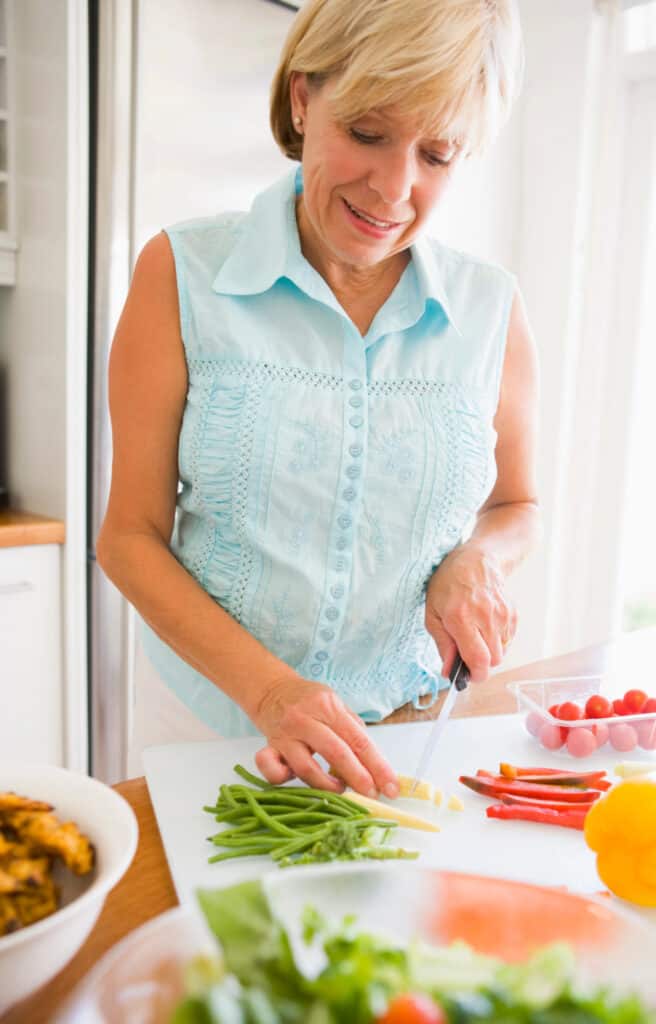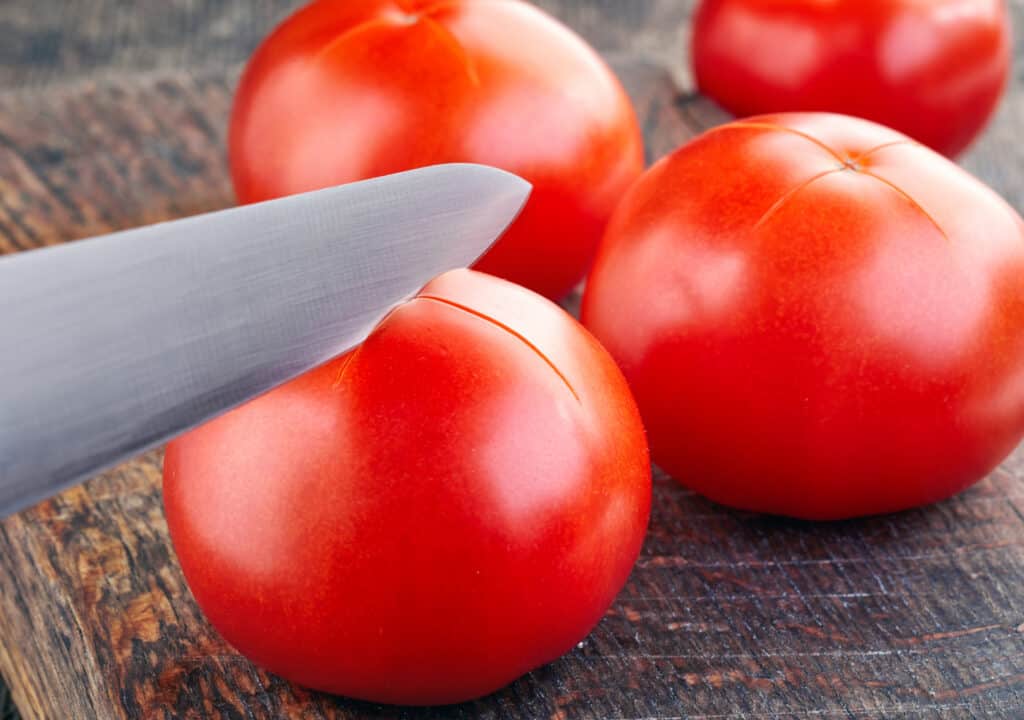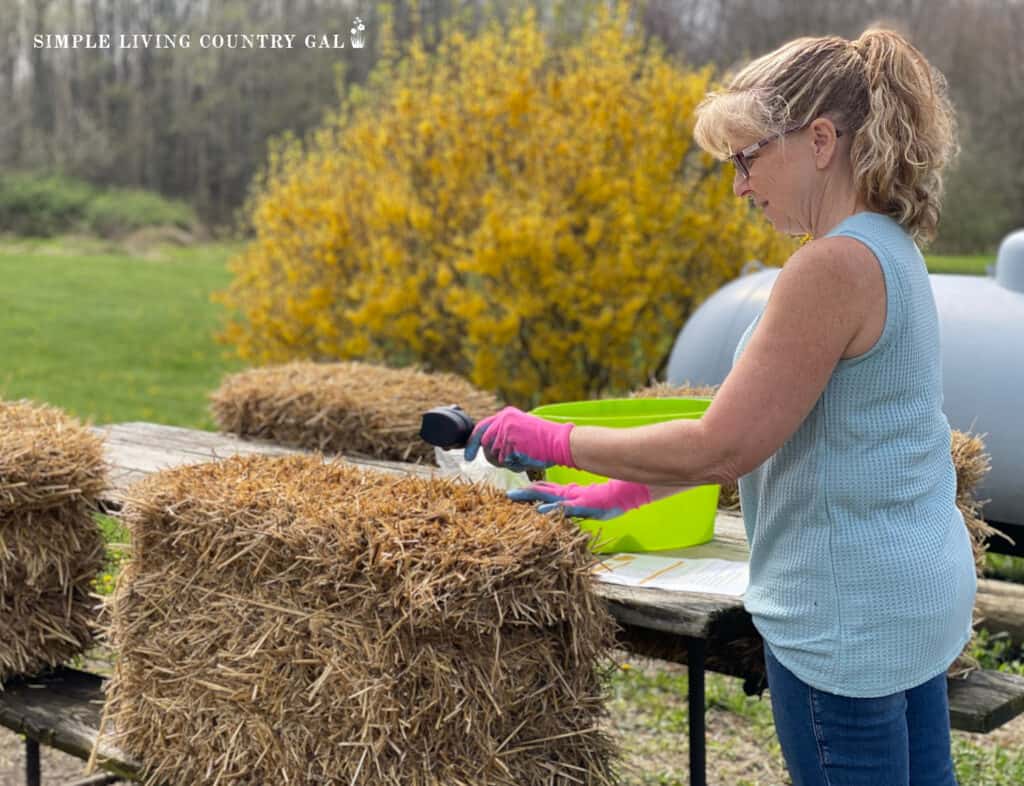self-sufficiency tips for midlife
Get the answer to what is self-sufficiency and whether it is a lifestyle you can thrive on. Before you can decide if this way of life is for you, you first need to know what it is and what it takes to live this way.
Homesteading tips come in many sizes, and this one is all about understanding a way of life that yes, requires work and commitment but has so many benefits for everyone involved.

What is self-sufficiency?
If you look in a dictionary, the definition of self-sufficiency is when a person needs no outside help to satisfy their basic needs, especially with regard to the production of food. And I suppose in a sense that is at the core of it. But as with anything in the world, things change and that means self-sufficiency means more than it once did.
If I were to break it down into one sentence, it would be this: “To grow it, raise it, or make it so you don’t have to buy it.” source: Simple Living Country Gal
Knowing you are responsible for yourself and your family and the store is only there as a backup, you can be more in control of your life, finances, and home. And that is a pretty liberating feeling.
Living a Self-Sufficient Lifestyle
In this tech-polluted world where convenience is the only way to get things done, more and more people are looking to take a step back so they can reassess their priorities. As a homesteader and empty nester this is particularly true. I can honestly say the last decade (or more) has been a blur, and as you get older, you find that enjoying the days has more importance than checking things off of an unrealistic to-do list.
Self-sufficiency isn’t just a trend; it’s a way of life that puts a person back in control of their family and home, making decisions that are beneficial for most, if not everyone, who lives there.

To live self-sufficiently you are looking to find a balance between what you consume and what you produce. This can mean growing your own food, raising livestock for milk or meat, harvesting rainwater, generating your own power, making your own clothes, and so much more.
The benefits of a self-sufficient lifestyle are timeless; they offer a sense of independence, reduce unnecessary waste, and create a genuine connection to animals and nature.
The self-sufficiency movement is also a result of today’s world. With so many uncertainties outside our front doors, we can gain peace of mind, knowing that we’re building a life that’s resilient and adaptive to change.
Set Your goals
Before you begin, you will want to define what self-sufficiency means to you. Are you looking to cut your expenses, improve your health, rely less on the stores, reduce your environmental impact, or perhaps a combination of all the above? Make a list of why you want to live this way of life and set achievable goals. Whether it’s to feed your family from your garden, make cheese and soap from your own milk, or to live completely off the grid, knowing your “why” is the first step to success.
How to Start Living Self-Sufficiently
There are many ways to get started, and most you can start doing right away. Start with a few small goals; as you become more comfortable, you can add on bigger projects.
Inside Your Home
When we think of self-sufficiency, inside the home is a great place to get started.
Grow Your Own Food
Did you know you can grow a surprising amount of food inside your home? Today there are so many ways to grow herbs and even salad ingredients from indoor hydroponic setups to a few pots and containers in a sunny window.
Start a few plants now, and as the weather warms up, you can move them outside to continue growing all summer long. Every little bit counts and the satisfaction of eating something you’ve grown makes even the smallest tomato taste better.

Take On DIY Home Projects
Learning to do basic home repairs can save money and reduce the need for outside contractors. Fixing a leaky faucet, patching a wall, or digging a garden drain are all skills that can be learned relatively quickly and easily online or from a book at your local library.
Practice Energy Efficiency
Simple tweaks can save you big money with your utilities and are so easy to do. Here are a few ideas:
- Turn off lights when you are finished in a room.
- Run the dishwasher only when full.
- Use draft dodgers to keep cold air out in the winter.
- Shut blinds to keep a house cooler in the summer.
- Turn down your hot water heater.
- Wear a sweater and keep the thermostat lower.
- Use an air fryer instead of your oven.
- Add more insulation to your home.
These tips can get you started and reduce your household’s energy consumption.
Heaven’s Harvest Survival Seed Bank Kit (Over 25,000) Fruit & Vegetable Non-GMO Heirloom Seeds for Planting a 3+ Acre Home Garden. 100% Secure: Emergency Weather-Proof Bucket (1-Pack)


Outside Your Home
There are also things you can do outside of your home.
Gardening and Farming Tips
If space allows, start a vegetable garden or consider expanding the one you have now. Rather than growing just what you need in the moment, consider growing more so you can preserve the excess and stock your freezer and pantry.
Use alternative gardening techniques if you have physical limitations making it easier to garden. Here are a few ideas to try:
- Straw Bale Gardening for Beginners
- Easy Container Gardening Tips for Beginners
- How to Grow Potatoes in Containers
Livestock and Other animals
It’s true that a pasture of cows isn’t the best option for many homesteaders but you can still raise a few animals to help fill your kitchen with more delicious options.
- Dairy Goats – Great for milk that you can use for drinking, making soaps and lotions, cheese and butter.
- Meat Goats
- Sheep – Great for milk and fleece.
- Pigs
- Rabbits
- Chickens – Great for eggs and meat.
- Ducks
- Bees – Great for honey.
Livestock Guides
Repurpose and Recycle
Challenge yourself to produce less waste whenever possible. You can do this by buying in bulk, upcycling something old into something you need, and composting kitchen scraps and other items.
Use Nature
Work with Mother Nature to get more of what you need. You can use a large barrel to collect rainwater for animals or to water your garden. You can use leaves to mulch your garden or old branches to build a roost in the chicken coop.
Almost Amish: One Woman’s Quest for a Slower, Simpler, More Sustainable Life


5 Easy Ways to live Self-Sufficient Today
Feeling inspired but not sure where to start? Here are five simple steps you can take right now to begin living a more self-sufficient life:
1. Start a Small Garden
Whether it’s a one pot herb garden or a small raised bed, gardening is the best way to start self-sufficiency. Growing your own food is not only rewarding but allows you to be in more control of your grocery budget. Gardening also gets you outside into the fresh air, making this an enjoyable labor of love.

2. Be Intentional with Energy Use
Conserve energy by unplugging devices and turning off lights when they’re not in use. Consider switching to LED bulbs and using natural light whenever possible. Small changes can really add up, giving you significant savings on your energy bill.
3. Learn new Skills
Make a goal to learn a new skill every month and watch your knowledge grow! You can research things online or check out books from your library. Things like making soap, using herbs for remedies, quilting, canning, or making jerky are all great skills.
4. Cook from Scratch
Preparing meals from scratch not only saves money but it’s also healthier and can reduce food waste. Start with simple recipes and as you build confidence in the kitchen, you can try more challenging items like bread and yogurt.
5. Declutter and Live Minimally
Reducing the amount of stuff you have can free up mental and physical space. Minimalism is a natural part of self-sufficiency, as it encourages you to live with what you need rather than with what you want. Keep the tools you need and donate the duplicates, freeing up space and making your home more efficient and easier to keep clean.
Remember, self-sufficiency is not an all-or-nothing way lifestyle. Even small steps can significantly change your home and life. Now that you know what is self-sufficiency you can get started with a few easy and fun projects today.








